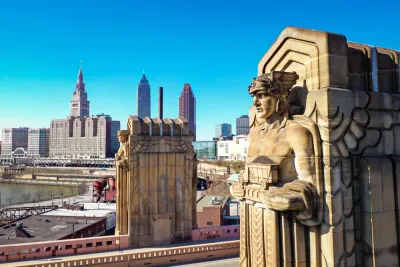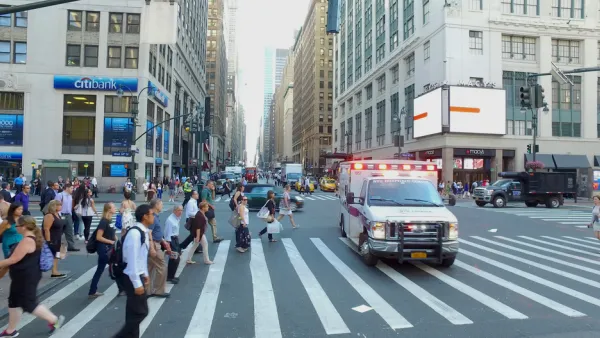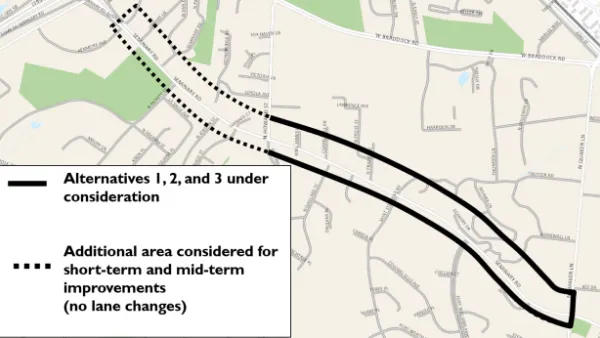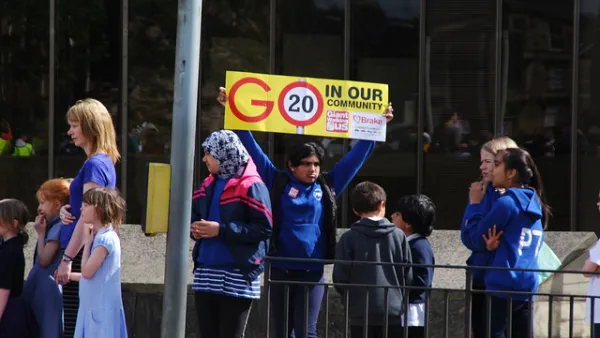Cleveland is working to become the latest U.S. city to set a goal to eliminate traffic fatalities.

Cleveland is putting the finishing touches on a Vision Zero plan following four years of planning, according to an article by Steven Litt for the Plain Dealer. The plan would eliminate traffic fatalities in the city by 2032.
After providing an overview of the international Vision Zero movement, Litt describes the need for traffic safety improvements in Cleveland. “Some 19,000 crashes have occurred on city streets over the past five years,” writes Litt. “The average annual number of deaths from 2016 to 2021 was nearly 55. There were 74 deaths in 2021, and 31 as of August 8 this year” according to Litt’s source in the article, Calley Mersmann, Cleveland’s senior strategist for transit and mobility.
Traffic safety is also much worse in Cleveland’s predominantly Black neighborhoods on the city’s East Side, according to the article.
While traffic fatalities are climbing nationwide, and some cities that have made great fanfare of their adoption of Vision Zero have only seen more traffic fatalities in recent years, there are few notable examples of success, including Fremont, California and Hoboken, New Jersey.
Advocates, such as Angie Schmitt writing for Planetizen in March 2021, say Vision Zero is possible, with the right combination of technological and design changes, notably including speed governors on cars such as the technology required of electric scooters.
The source article, linked below, includes more details about the political and planning partnerships that paved the way for Cleveland’s new Vision Zero initiative. Vision Zero will be considered by the city’s Planning Commission later this week, before heading to the full City Council for final approval.
“The city is also ramping up its Complete and Green Streets program, following City Council approval earlier this year of an updated version of an earlier ordinance carrying the same name,” notes Litt.

National Parks Layoffs Will Cause Communities to Lose Billions
Thousands of essential park workers were laid off this week, just before the busy spring break season.

Retro-silient?: America’s First “Eco-burb,” The Woodlands Turns 50
A master-planned community north of Houston offers lessons on green infrastructure and resilient design, but falls short of its founder’s lofty affordability and walkability goals.

Delivering for America Plan Will Downgrade Mail Service in at Least 49.5 Percent of Zip Codes
Republican and Democrat lawmakers criticize the plan for its disproportionate negative impact on rural communities.

Test News Post 1
This is a summary

Test News Headline 46
Test for the image on the front page.

Balancing Bombs and Butterflies: How the National Guard Protects a Rare Species
The National Guard at Fort Indiantown Gap uses GIS technology and land management strategies to balance military training with conservation efforts, ensuring the survival of the rare eastern regal fritillary butterfly.
Urban Design for Planners 1: Software Tools
This six-course series explores essential urban design concepts using open source software and equips planners with the tools they need to participate fully in the urban design process.
Planning for Universal Design
Learn the tools for implementing Universal Design in planning regulations.
EMC Planning Group, Inc.
Planetizen
Planetizen
Mpact (formerly Rail~Volution)
Great Falls Development Authority, Inc.
HUDs Office of Policy Development and Research
NYU Wagner Graduate School of Public Service





























